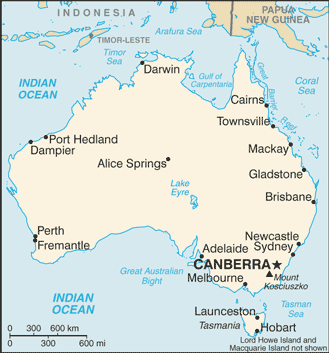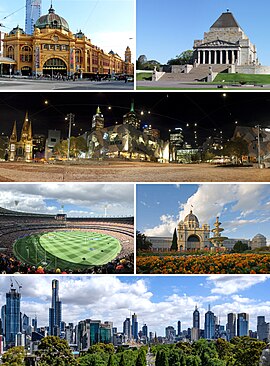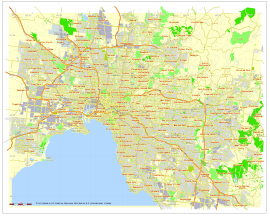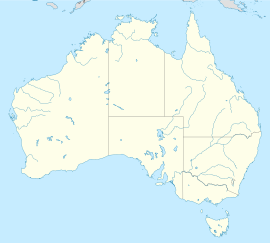20.03.2020

2 група - англійська мова - тема уроку "Найбільші міста Австралії"

Canberra
| Canberra Australian Capital Territory | |||||||||
|---|---|---|---|---|---|---|---|---|---|

Canberra, from top left to bottom right–the city viewed from Mount Ainslie, the Land Axis featuring Old Parliament House and New Parliament House, the Australian War Memorial, the National Carillon, the National Gallery of Australia and the National Library of Australia on Lake Burley Griffin
| |||||||||

City map plan of Canberra
| |||||||||
| Coordinates | 35°17′35″S 149°07′37″E | ||||||||
| Population | 420,960 (2018)[1] (8th) | ||||||||
| • Density | 503.932/km2 (1,305.18/sq mi) | ||||||||
| Established | 12 March 1913 | ||||||||
| Elevation | 578 m (1,896 ft)[2] | ||||||||
| Area | 814.2 km2 (314.4 sq mi)[3] | ||||||||
| Time zone | AEST (UTC+10:00) | ||||||||
| • Summer (DST) | AEDT (UTC+11:00) | ||||||||
| Location | |||||||||
| Territory electorate(s) | |||||||||
| Federal Division(s) | |||||||||
| |||||||||
Canberra is the capital city of Australia. Founded following the federation of the colonies of Australia as the seat of government for the new nation, it is Australia's largest inland city and the eighth-largest city overall. The city is located at the northern end of the Australian Capital Territory; 280 km (170 mi) south-west of Sydney and 660 km (410 mi) north-east of Melbourne.
On 1 January 1901, federation of the colonies of Australia was achieved. Section 125 of the new Australian Constitution provided that land, situated in New South Wales and at least 100 miles (160 km) from Sydney, would be ceded to the new federal government. Following discussion and exploration of various areas within New South Wales, the Seat of Government Act 1908 was passed in 1908 which specified a capital in the Yass-Canberra region. The land was transferred to the Commonwealth by New South Wales in 1911, creating the Australian Capital Territory, two years prior to the capital city being founded and formally named as Canberra in 1913.
It is unusual among Australian cities, being an entirely planned city outside of any state, similar to Washington, D.C. in the United States or Brasília in Brazil. Following an international contest for the city's design, a blueprint by American architects Walter Burley Griffin and Marion Mahony Griffin was selected and construction commenced in 1913. The Griffins' plan featured geometric motifs such as circles, hexagons and triangles, and was centred on axes aligned with significant topographical landmarks in the Australian Capital Territory. The city's design was influenced by the garden city movement and incorporates significant areas of natural vegetation.
As the seat of the government of Australia, Canberra is home to many important institutions of the federal government, national monuments and museums. This includes Parliament House, the official residence of the monarch's representative the Governor-General, the High Court and numerous government departments and agencies. It is also the location of many social and cultural institutions of national significance such as the Australian War Memorial, the Australian National University, the Royal Australian Mint, the Australian Institute of Sport, the National Gallery, the National Museum and the National Library. The city is also home to many important institutions of the Australian Defence Force including the Royal Military College Duntroon and the Australian Defence Force Academy. It also hosts the majority of foreign embassies in Australia as well as regional headquarters of many international organisations, not-for-profit groups, lobbying groups and professional associations.
Canberra does not have a local council or city government like other Australian cities. The Australian Capital Territory Legislative Assembly performs the roles of both a city council for the city and a territory government for the rest of the Australian Capital Territory. The vast majority of the population of the Territory reside in Canberra though and the city is therefore the primary focus of the ACT Government. However, the federal government maintains authority over the Territory and may overturn local laws. It still maintains control over the area known as the Parliamentary Triangle through the National Capital Authority.
As at June 2018 the population of Canberra was 420,960, having grown by 2.2% over the preceding 12 months. As the city has a high proportion of public servants, the Commonwealth Government contributes the largest percentage of gross territory product and is the largest single employer in Canberra, although not the majority employer. Compared to the national averages, the unemployment rate is lower and the average income higher; tertiary education levels are higher, while the population is younger.
Melbourne
| Melbourne Victoria | |||||||||
|---|---|---|---|---|---|---|---|---|---|

From top, left to right: Flinders Street Station, Shrine of Remembrance, Federation Square, Melbourne Cricket Ground, Royal Exhibition Building, the Melbourne skyline.
| |||||||||

Map of Melbourne, Australia, printable and editable
| |||||||||
| Coordinates | 37°48′49″S 144°57′47″E | ||||||||
| Population | 4,963,349 (2018)[1] (2nd) | ||||||||
| • Density | 496.683/km2 (1,286.40/sq mi) | ||||||||
| Established | 30 August 1835 | ||||||||
| Elevation | 31 m (102 ft) | ||||||||
| Area | 9,993 km2 (3,858.3 sq mi)(GCCSA)[2] | ||||||||
| Time zone | AEST (UTC+10) | ||||||||
| • Summer (DST) | AEDT (UTC+11) | ||||||||
| Location | |||||||||
| LGA(s) | 31 Municipalities across Greater Melbourne | ||||||||
| County | Grant, Bourke, Mornington | ||||||||
| State electorate(s) | 54 electoral districts and regions | ||||||||
| Federal Division(s) | 23 Divisions | ||||||||
| |||||||||
Melbourne is the capital and most populous city of the Australian state of Victoria, and the second most populous city in Australia and Oceania. Its name refers to an urban agglomeration of 9,993 km2 (3,858 sq mi), comprising a metropolitan area with 31 municipalities, and is also the common name for its city centre. The city occupies much of the coastline of Port Phillip bay and spreads into the hinterlands towards the Dandenong and Macedon ranges, Mornington Peninsula and Yarra Valley. It has a population of 5 million (19% of the population of Australia), and its inhabitants are referred to as "Melburnians".
The city was founded on 30 August 1835, in the then-British colony of New South Wales, by free settlers from the colony of Van Diemen’s Land (modern-day Tasmania), It was incorporated as a Crown settlement in 1837, and named Melbourne by Governor General Richard Bourke on 10 April 1837 in honour of the then British Prime Minister, William Lamb, 2nd Viscount Melbourne. In 1851, four years after Queen Victoria declared it a city, Melbourne became the capital of the new colony of Victoria. In the wake of the 1850s Victorian gold rush, the city entered a lengthy boom period that, by the late 1880s, had transformed it into one of the world's largest and wealthiest metropolises. After the federation of Australia in 1901, it served as interim seat of government of the new nation until Canberra became the permanent capital in 1927. Today, it is a leading financial centre in the Asia-Pacific region and ranks 15th in the Global Financial Centres Index.
Melbourne is home to many of Australia's best-known landmarks, such as the Melbourne Cricket Ground, the National Gallery of Victoria and the World Heritage-listed Royal Exhibition Building. It is also the birthplace of Australian impressionism, Australian rules football, and the Australian film and television industries. More recently, it has been recognised as a UNESCO City of Literature and a global centre for street art, live music and theatre. It hosts major annual international events such as the Australian Grand Prix, the Australian Open and the Melbourne Cup, and also hosted the 1956 Summer Olympics and the 2006 Commonwealth Games. Due to it rating highly in entertainment, tourism and sport, as well as education, health care, research and development, Melbourne consistently ranked as the world's most liveable city for much of the 2010s.
The main airport serving the city is Melbourne Airport (also referred to as Tullamarine Airport), which is the second busiest in Australia, and Australia's busiest seaport the Port of Melbourne. Its main metropolitan rail terminus is Flinders Street station and its main regional rail and road coach terminus is Southern Cross station. It also has the most extensive freeway network in Australia and the largest urban tram network in the world.
Sydney
| Sydney New South Wales | |||||||||
|---|---|---|---|---|---|---|---|---|---|
 | |||||||||

Map of the Sydney metropolitan area
| |||||||||
| Coordinates | 33°51′54″S 151°12′34″E | ||||||||
| Population | 5,230,330 (2018)[1] (1st) | ||||||||
| • Density | 423/km2 (1,100/sq mi) (2018)[2] | ||||||||
| Established | 26 January 1788 | ||||||||
| Area | 12,367.7 km2 (4,775.2 sq mi)(GCCSA)[3] | ||||||||
| Time zone | AEST (UTC+10) | ||||||||
| • Summer (DST) | AEDT (UTC+11) | ||||||||
| Location | |||||||||
| LGA(s) | various (31) | ||||||||
| County | Cumberland[4] | ||||||||
| State electorate(s) | various (49) | ||||||||
| Federal Division(s) | various (24) | ||||||||
| |||||||||
| Footnotes | Coordinates:[6] | ||||||||
Sydney is the state capital of New South Wales and the most populous city in Australia and Oceania. Located on Australia's east coast, the metropolis surrounds Port Jackson and extends about 70 km (43.5 mi) on its periphery towards the Blue Mountains to the west, Hawkesbury to the north, the Royal National Park to the south and Macarthur to the south-west. Sydney is made up of 658 suburbs, 40 local government areas and 15 contiguous regions. Residents of the city are known as "Sydneysiders". As of June 2017, Sydney's estimated metropolitan population was 5,230,330 and is home to approximately 65% of the state's population.
Indigenous Australians have inhabited the Sydney area for at least 30,000 years, and thousands of engravings remain throughout the region, making it one of the richest in Australia in terms of Aboriginal archaeological sites. During his first Pacific voyage in 1770, Lieutenant James Cook and his crew became the first Europeans to chart the eastern coast of Australia, making landfall at Botany Bay and inspiring British interest in the area. In 1788, the First Fleet of convicts, led by Arthur Phillip, founded Sydney as a British penal colony, the first European settlement in Australia. Phillip named the city Sydney in recognition of Thomas Townshend, 1st Viscount Sydney. Penal transportation to New South Wales ended soon after Sydney was incorporated as a city in 1842. A gold rush occurred in the colony in 1851, and over the next century, Sydney transformed from a colonial outpost into a major global cultural and economic centre. After World War II, it experienced mass migration and became one of the most multicultural cities in the world. At the time of the 2011 census, more than 250 different languages were spoken in Sydney. In the 2016 Census, about 35.8% of residents spoke a language other than English at home. Furthermore, 45.4% of the population reported having been born overseas, and the city has the third largest foreign born population of any city in the world after London and New York City, respectively.
Despite being one of the most expensive cities in the world, Sydney frequently ranks in the top ten of lists of the most livable cities in the world. It is classified as an Alpha+ World City by Globalization and World Cities Research Network, indicating its influence in the region and throughout the world. Ranked eleventh in the world for economic opportunity, Sydney has an advanced market economy with strengths in finance, manufacturing and tourism. There is a significant concentration of foreign banks and multinational corporations in Sydney and the city is promoted as Australia's financial capital and one of Asia Pacific's leading financial hubs. Established in 1850, the University of Sydney is Australia's first university and is regarded as one of the world's leading universities. Sydney is also home to the oldest library in Australia, State Library of New South Wales, opened in 1826.
Sydney has hosted major international sporting events such as the 2000 Summer Olympics. The city is among the top fifteen most-visited cities in the world, with millions of tourists coming each year to see the city's landmarks. Boasting over 1,000,000 ha (2,500,000 acres) of nature reserves and parks, its notable natural features include Sydney Harbour, the Royal National Park, Royal Botanic Garden and Hyde Park, the oldest parkland in the country. Built attractions such as the Sydney Harbour Bridge and the World Heritage-listed Sydney Opera House are also well known to international visitors. The main passenger airport serving the metropolitan area is Kingsford-Smith Airport, one of the world's oldest continually operating airports. Established in 1906, Central station, the largest and busiest railway station in the state, is the main hub of the city's rail network.
завдання :
1) Читати і перекладати тексти про найбільші міста Австралії
2) Виписати в словник і вчити нові для вас слова
3) Повторити утворення різних типів речеення в простих часах.


Комментариев нет:
Отправить комментарий